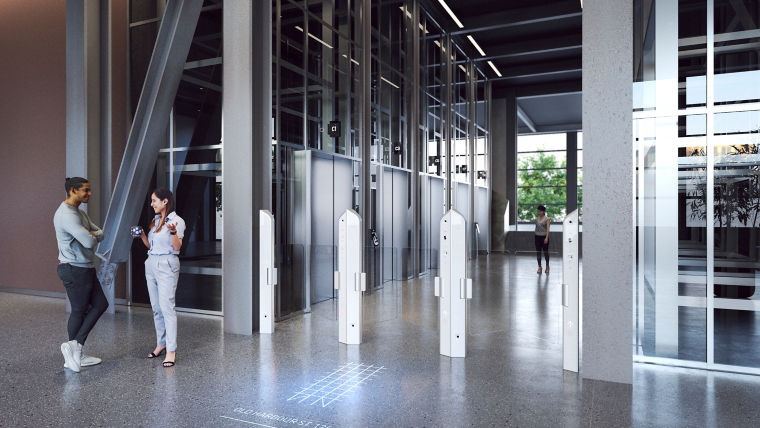“When people talk about universal design, they often refer to accessibility, designing something so it can be used by people with disabilities. For example, elevator controls should be at a certain height so they can be comfortably reached by a person in a wheelchair,” Visa Rauta says. “We aim towards fully immersive inclusive design. It requires taking a giant leap forward – going beyond functional needs to create spaces that are welcoming for everyone.”
KONE’s approach to inclusive design considers how aspects such as language, culture, and ability impact how we use something. Yet it doesn’t seek to be simply useful, but to be enjoyable. Great inclusive design makes an emotional connection, it is something that we as people want to experience again and again.
“For us at KONE, inclusive design is a philosophy, not a checklist of features,” Rauta explains. “It is making the experience richer and more joyful.”

A digital sense of place and belonging
KONE Office Flow features the KONE Lane turnstile, an efficient access system for offices and multipurpose environments. Designed with inclusive principles, it’s intuitive to use. The gate grants access but also guides people forward. Access can be provided via card, QR code – or maybe a method yet to be invented. The system responds with personalized light displays, such as an arrow on the floor pointing to the nearest free elevator or to the reserved meeting room.
“The Office Flow augmented reality display can also be adapted culturally, localizing the same solution for different continents,” says Rauta. “For instance, in Shanghai you might have a little friendly dragon showing the way instead of arrows to celebrate the year of the dragon. The goal is to enhance the users’ experience, give them a little reason to smile.”
This is what Rauta calls digital placemaking: using digital tools to give a person a sense of place, a sense of belonging. When someone walks into a KONE DX Class elevator they are treated to an experience which can be continually updated to reflect local happenings or the identity of the place. They could hear music from local bands and enjoy local artists’ works on the display screens. Or when they walk in and see the rainbow colors during Pride Month, they feel welcome and accepted.

Designing the best possible experience
Inclusive design is best accomplished as a co-creation process. The first KONE Lane turnstile and augmented guidance was co-developed with a customer for a building in downtown Chicago. Goals were set; ideas, presentations and prototypes were created; technical and architectural hurdles were surpassed. But sometimes life can throw in an unexpected challenge. Like the sun.
“This building has big windows, so bright sunlight shines right where the guidance is displayed on the floor,” Rauta explains. “Halogen bulbs use too much energy, generate heat, and have a short lifetime. LEDs might not be bright enough. So, we used lasers in the video projector for the floor display, and even then, we designed for possible future scenarios. The lasers are only at 60 percent power, so they can be brightened.”
Inclusive design is not just designing for different locations or groups of people. It can even be personalized, for example with a destination control solution which is part of KONE Office Flow.
“Perhaps you want to use a particular language, so the system recognizes your preferences and displays information in that language,” says Rauta. “Maybe you have impaired sight, so you can set the guidance displays to the size you want. Inclusive people flow solutions allow you to do it intuitively your own way based on your preferences.”
This can even be applied to momentary needs. For example, someone has their hands full of groceries and can’t reach their pocket for an access card. Inclusive design could give them the option to use alternative frictionless access methods, like proximity sensors or voice recognition, or the buttons could be sized and placed appropriately so they could be pressed with an elbow.

How to make inclusivity cool
“Solutions that don’t genuinely consider everyone can make a disabled person feel uncomfortable: ‘I have to use this feature because of my disability’. No, the idea is to normalize inclusivity,” Rauta says. “When designed correctly, the feature becomes cool to use. Some of the voice activation features were originally designed for people with seeing impairments. Now people think they are appealing and fun to use. This is an example of cool accessibility that provides intuitive flow to all of us.”
It is a challenge to anticipate every possible scenario, so Rauta emphasizes the need to incorporate diverse perspectives beyond a stereotypical user. It is also important to build flexibility into solutions through user participation.
“Involving users removes bias and makes solutions more adaptable to diverse needs.”
Ultimately, inclusive design aims to foster wellbeing in society.
“Inclusive design is life-centric, it helps pave the way and build a culture towards a more inclusive society. This progress is good for our wellbeing and business.”
